- Home
- Gerald Durrell
The New Noah Page 7
The New Noah Read online
Page 7
You find that after the first day at sea your animals’ appetites increase tremendously with the sea air, and the monkeys will, if you let them, eat four and five times as much as they normally do. You are supposed to know this before you start on your voyage and to make allowances for it when you are buying the food supplies. Of course, you cannot take with you such delicacies as grasshoppers and termites, but you can get cockroaches for the more delicate birds and animals by going down into the engine-rooms in the evenings and chasing them in and out among the hot pipes. It was not long before the sailors on board ship became quite enthusiastic over this sport and soon we had no reason to go and collect these insects ourselves, for the people from the engine-rooms would bring us a regular supply.
A sea voyage lasting two or three weeks can be very enjoyable, provided that your luggage does not include large quantities of extremely hungry animals. If it does, you will find that you have to work as hard, or harder, than any of the sailors on board ship.
I had to be called at half past five every morning to enable me to get through a lot of the cleaning before breakfast. Then, when I had finished breakfast, I started on the job of feeding the animals, and from then on there was actually not a moment of the day that I could call my own until the last pot of evening milk had been put into the monkeys’ cages. As the ship steamed closer and closer to England, the weather became colder and colder, and there were more precautions that had to be taken to ensure that my animals did not catch a chill. Hot milk became the rule every night and the cages had to be carefully covered with tarpaulins and blankets to keep out the cold wind. If there was a rough sea I had to make sure that all the cages were carefully secured to the rails, or else a bad accident might occur.
I had forgotten to do this on the way back from West Africa, and late one night as I was giving the young monkeys the last bottle feed of the day, I noticed the ship was plunging up and down quite vigorously. Looking along my line of cages which were stacked against the rails, I decided that, when I had finished feeding the baby monkeys, I would have to rope them; otherwise, if the weather became worse during the night, they were liable to topple over. No sooner had I made this decision than the ship lurched sickeningly over a particularly big wave and my line of fifty cages toppled and crashed over on their faces on to the deck. I rushed along, lifting them upright and tying them back against the rails, and to my relief, found that none of the inmates was hurt in any way, although the monkeys were extremely indignant and chattered for a long time over the incident.
Sometimes you get other forms of excitement on board ship, when you are travelling with your collection. Coming back from West Africa, I and my friend sailed on a ship whose captain, so people told us, was not at all keen on carrying animals. Naturally, when we heard this, we went out of our way to make as little fuss and trouble as possible, for an irritated captain is a man that no collector likes, as he can make life on board ship very difficult for you and your animals. Well, as usual, when you try to be on your best behaviour for someone, something is sure to go wrong.
The very first morning, my friend threw a large basket of dirty sawdust that we had cleaned out of the cages over the rail into the sea. Unfortunately, he had not made sure which way the wind was blowing and so a huge swirling cloud of dust sailed up into the air and descended on to the bridge where the captain was standing.
This, of course, was not a very good start in our efforts to keep on the right side of him. However, at breakfast, though he greeted us somewhat coldly, he gradually thawed out and, towards the middle of the meal, became quite amiable.
The captain was sitting on one side of the table and I was sitting opposite to him; behind was a series of portholes that looked out on to the hatch where we had all our cages stacked. ‘I don’t mind what you do,’ said the captain to me, ‘providing you don’t let any of your animals escape.’ ‘Oh! we shan’t do that,’ and as I said it, I noticed something moving in the porthole just behind the captain’s back. To my horror, I saw that there was a large squirrel. He sat in the porthole and surveyed the dining-saloon with a pleased expression. Then he sat up and started to wash his whiskers.
The captain, meanwhile, continued his breakfast, unaware that there was a squirrel sitting within a yard or so of his neck. When the squirrel had finished washing his whiskers, he looked around him and decided that with so much food on the table the dining saloon would be a good place for him to investigate, so he peered round for a way down. He had evidently just decided that the best way of reaching the delicacies which he could see, was to jump on to the captain’s shoulder and then on to the table, when with a muttered ‘Excuse me,’ I got up, walked out of the dining-room as nonchalantly as I could, and as soon as I was out of sight of the captain I sprinted hard up on to the deck. I arrived outside the porthole just as the squirrel was bunching himself to spring, and I managed to throw myself across the hatch and grab his big furry tail before he could launch himself on to the captain. I bundled him back into his cage, chattering indignantly, and then I sighed with relief.
When I returned to the dining-room, I found luckily that the captain had not noticed anything and he did not know how close he had been to having a large squirrel land on his neck just as he was in the middle of his bacon and eggs.
As I say, because we wanted to be on our best behaviour nothing seemed to go right. A few days later three large lizards escaped from their box and disappeared rapidly into some large coils of rope lying on the deck. As it was quite impossible to move all that stuff to catch them without the aid of half the ship’s company, we had to content ourselves with making grabs at them every time they appeared. At last, after three days, we caught them all, but it was a nerve-racking time, as I was quite convinced that they would somehow or other find their way up on to the bridge and that the captain would see them.
We had only just succeeded in getting the reptiles safely under lock and key, when a monkey escaped. She was a perfectly tame creature and normally would come to you, if you called her, but on this occasion she was far too interested in exploring the ship to bother about us, and scarcely spared us a few glances even when we tried to lure her back into her cage with a large bunch of golden bananas, a bait which she usually never could resist. That day the ship was pitching and tossing a good deal, and if it had not been for this, I dread to think what would have happened, for the monkey scuttled up the ladder from the well-deck on to the passenger-deck. Luckily there was nobody about and I pursued her, calling in a hoarse whisper. Each time the ship rolled, she was thrown a bit off balance and I would gain a few feet, as I was more used to the movement than the little monkey. She reached the bottom of the staircase leading up to the captain’s cabin, and then seeing how close I was, she hesitated for a minute and then turned and ran up the steps towards his half-opened cabin door. I flung myself up the stairs after her, but without much hope, and I could visualize her landing with a thump in the middle of the captain’s bed with the captain inside it. Fortunately just as she reached the top step the ship lurched sickenly, and she fell back down three steps which gave me the chance I needed. I grabbed her long furry tail, hoisted her in the air and ran back down into the well-deck as quickly as I could, for I was afraid that her screams of rage would be heard by the captain and bring him out of his cabin to see what was going on.
It was altogether a very trying trip and we were very pleased when, one grey morning, with thin drizzle falling out of the sky, the ship drew into the docks at Liverpool. There on the quay-side were the zoo vans, waiting to collect the specimens. Our collection was unloaded from the ship without any mishap and the animals distributed among the various directors, and we watched them with mixed feelings as they drove off through the rain to their new homes in the various zoos in England.
PART TWO
Hunts and Captures in Guiana
In which Amos the ant-eater leads us a dance
Guiana is a country lying in the northern half of South America, and i
s almost as big as Ireland. It is situated on the edge of the great forested region that stretches right along the Amazon and through Brazil. The name Guiana is taken from an Amerindian word meaning the land of water, and it would be difficult to think of a more apt description of the country.
It is split by three great rivers which run down its entire length and which are connected to each other by great numbers of small streams and tributaries. During the rainy season these streams overflow and enormous areas of country are flooded for weeks at a time. Owing to this, we found that nearly all the animals in Guiana were either expert climbers or expert swimmers; animals that in less watery countries spend their whole lives on the ground were here replaced by similar creatures that lived almost entirely in the trees: for example, in the Cameroons you find bush-tailed porcupines which live on the floor of the forest and make their homes among the rocks and caves, and who would find it almost impossible to climb a tree.
In Guiana there are the tree porcupines whose paws are adapted for climbing, and whose long naked tails are prehensile – that is to say, like the South American monkeys, they can wind their tails round the branches to help them in climbing.
We found that Guiana could be roughly divided into two parts. Great forest-lands spread from the shore inland and eventually gave way to extensive savanna-lands where the vegetation was principally grass fields, small clumps of trees, and bushes dotted about it. The Cameroons was, of course, divided in much the same way, and this meant that in both Guiana and the Cameroons you would find one set of animals inhabiting the forest and a totally different set living in the grasslands.
Along the coast of Guiana where the great rivers flow out into the sea, the land is split up by thousands of rivers and creeks. Some are only a few feet wide and some are considerably bigger than the average English river. These creeks provide the most beautiful scenery in Guiana. The waters, filled with dead leaves and logs, are stained a rich sherry-brown colour and their movement is so gentle that the surface is generally as placid as a dark mirror.
The great trees hang over the water’s face, their branches festooned with long strands of Spanish moss, a grey lichen-like plant that looks like innumerable grey threads hanging from the trees. Then there are orchids in hundreds of different shades, which grow on the trunks and the branches, sometimes in such quantities that the trees seem as though studded with jewels.
Generally, as I say, the waterways are like long lanes of polished mirrors, but occasionally, growing on the surface of the water, you will come across a thick mat of green water plants from which tiny flowers of mauve and yellow thrust up their petals a few millimetres above the surface. In sunny spots near the bank, you will see great clusters of the giant water-lily, whose flowers are bigger than a teapot, and whose great plate-like leaves are the circumference of a bicycle wheel. When travelling up one of these overgrown creeks in a boat, it is as though you are sliding over a green lawn, for, as you move along, the nose of the boat thrusts the water-plants aside and, passing on, the plants float together again so that no water is visible. With the movement of the boat, ripples cause the water-plants to rise and fall in green waves in your wake.
When we arrived in Guiana, our base camp was in the capital of Georgetown. For here it was easy to obtain a large and regular supply of food for our animals, and we could be within easy reach of the docks, when we had to load the collection on to the ship. Having made our base camp, we would then take trips into the interior of Guiana, visiting the different types of country and capturing the animals that lived there.
The first trip of this sort that I made was to the grasslands near the Pomeroon River. We set off from Georgetown and headed up the creeks in the direction of a small Amerindian town called Santa Maria, hidden away in the depths of this strange, swampy country. It took us a whole day to reach our destination and it was an unforgettable trip. As the boat slid smoothly up the polished waterways under the brilliant trees, big black woodpeckers with scarlet-crested heads flew ahead of us, giving wild shrill cries and stopping every now and then on a dead tree to rattle on it vigorously with their beaks. In the undergrowth along the bank were flocks of marsh birds, the size of a sparrow, with black bodies and brilliant canary-yellow heads. Occasionally, as we rounded a corner, a pair of scarlet ibis would fly up in a flutter of pink and crimson wings.
On the aquatic vegetation along the edge of the creek there were great numbers of jacanas, a strange looking bird rather like an English moorhen. The most astonishing thing about them is that they have long, slender legs ending in a bunch of great thin toes. These toes enable them to walk over the water-plants on the surface of the water without falling through, for with each step the jacana spreads out its toes like a spider and distributes its weight evenly over the lily leaves. When they are walking solemnly across the lily pads they look rather drab little birds, but when they fly you can see that they have a brilliant lemon yellow patch under each wing.
Occasionally, we would disturb a cayman lying on the bank. This is the South American equivalent of the crocodile in Africa. They would watch us for a moment with raised heads, their mouths half open, and then would scuttle heavily to the edge of the bank and plop into the water.
We arrived at Santa Maria late that night, and the next day, with the help of the Amerindian villagers, set out to collect our animals. Many of the Amerindian people keep the wild forest animals as pets and a number of these they allowed us to buy, so in a very short time we acquired a great number of brilliant macaws, whose screams and shouts nearly deafened us in our small hut, several young boa-constrictors and two or three Capuchin monkeys.
I was very surprised to find the Amerindians keeping boa-constrictors as pets, for I had expected to find them as frightened of snakes as the Africans were. Inquiring about it, I discovered that they kept these reptiles in their huts crawling about on the rafters, and they took the place of the domestic cat in England. Feeding on any rats or mice they came across, these snakes would become very tame and, as long as the supply of rats and mice lasted, remained up in the rafters and never ventured down to the ground. The Amerindians explained to me that not only were the boa-constrictors far better rat catchers than any cat, but they were handsome pink, silver, black, and white creatures which were considerably more beautiful than cats to look at as they draped themselves like coloured scarves in the roofs of the huts.
In Guiana there are found three different kinds of ant-eater. There is the giant, which with its great shaggy tail, measures over six feet in length, there is the tamandua which is about the size of a pekinese, and there is the pygmy which only measures about eight inches long. Now these three ant-eaters live in completely different types of country and, although they are occasionally found in each other’s territory, they mainly stick to the country which suits them best. The giant ant-eater prefers to live on the grasslands in the northern half of Guiana, while the other two, being arboreal, inhabit the forested regions. The tamandua can be found even in the semi-cultivated portions of the country, but to find the pygmy, you have to go into the deep virgin forest.
To capture a giant ant-eater for our collection, I had to fly some two hundred miles inland up to the northern grass fields or savanna-land. The plane dropped me off at a remote ranch on the banks of the Rupununi River. Here I enlisted the aid of an extremely clever Indian hunter who was called Francis. I explained to him what I wanted, and after a lot of thought he said the best way would be for him to go out into the grass fields and search about until he found signs of where a giant ant-eater was living. Then we could go out and search for the animal and try to capture it.
I agreed to this plan, and three days later Francis turned up at the ranch-house, beaming all over his face, to tell me that he had been successful. Somewhere in a certain patch of the savanna, he had found unmistakable signs of an ant-eater’s presence, in the shape of ants’ nests that had been split open by its powerful claws.
So, very early Francis and my friend a
nd I, mounted on horseback, set off after the ant-eater. The golden grass fields, dotted here and there with small clumps of tiny shrubs, shimmered in the rays of the sun and stretched away in every direction to the distant horizon where there was a rim of pale greeny-blue mountains. We rode for hours and saw no life at all except a pair of tiny hawks circling high in the blue sky above us.
Now I knew that the grasslands had their fair share of animal life and I was rather surprised that on our ride we did not come across more creatures. I soon discovered why this was, for as we were riding along, we came to a great oval hollow in the bottom of which was a placid lake filled with water-lilies and fringed with lush plants and small trees. In a flash, everything seemed to come to life. The air was full of zooming dragonflies, and brilliantly coloured lizards scuttled about our horses’ hooves; kingfishers perched on the dead branches of trees hanging over the water and in the reeds and bushes alongside the lake there were hosts of tiny birds chattering and fluttering. As we rode past, I saw on the opposite bank ten jabiru storks, each standing about four feet high, and gazing down their long beaks with solemn expressions.
When we had passed the lake and once again entered the grass field, everything became lifeless again and the only sound was the steady crackle and swish of our horses’ hooves in the long grass.
So I realized that the majority of these grasslands were waterless from the point of view of animal and bird life, and it was for this reason that they concentrated round the edges of the lakes and pools which were to be found. Therefore, you might ride for miles and see no life at all, and then you would come to a little hollow with a pond or lake in it and find that its shores were overflowing with bird and animal life.

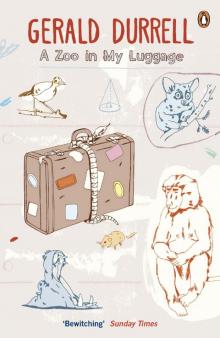 A Zoo in My Luggage
A Zoo in My Luggage The New Noah
The New Noah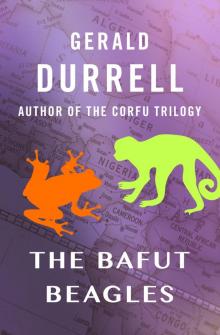 The Bafut Beagles
The Bafut Beagles Encounters With Animals
Encounters With Animals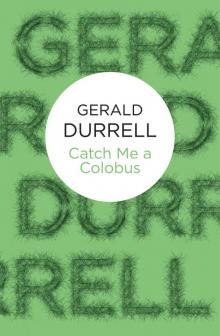 Catch Me a Colobus
Catch Me a Colobus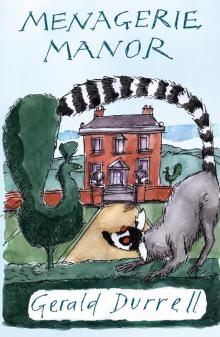 Menagerie Manor
Menagerie Manor The Picnic and Suchlike Pandemonium
The Picnic and Suchlike Pandemonium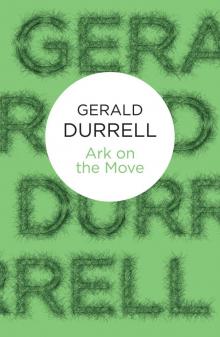 Ark on the Move
Ark on the Move My Family and Other Animals
My Family and Other Animals Two in the Bush (Bello)
Two in the Bush (Bello) The Stationary Ark
The Stationary Ark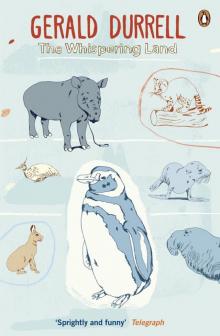 The Whispering Land
The Whispering Land Three Singles to Adventure
Three Singles to Adventure Fillets of Plaice
Fillets of Plaice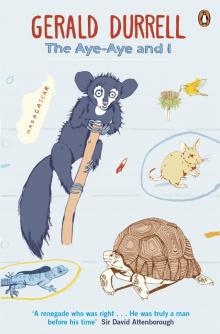 The Aye-Aye and I
The Aye-Aye and I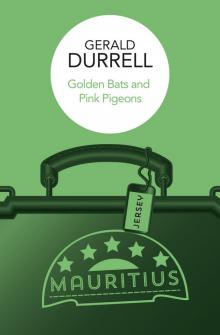 Golden Bats & Pink Pigeons
Golden Bats & Pink Pigeons The Drunken Forest
The Drunken Forest Marrying Off Mother: And Other Stories
Marrying Off Mother: And Other Stories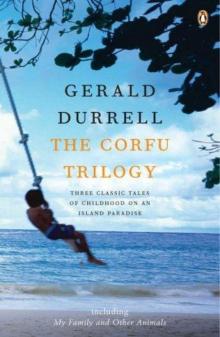 The Corfu Trilogy (the corfu trilogy)
The Corfu Trilogy (the corfu trilogy)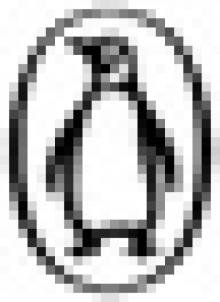 The Corfu Trilogy
The Corfu Trilogy Marrying Off Mother
Marrying Off Mother Two in the Bush
Two in the Bush